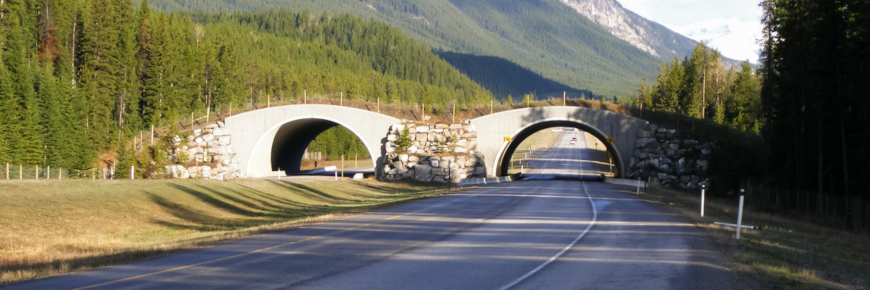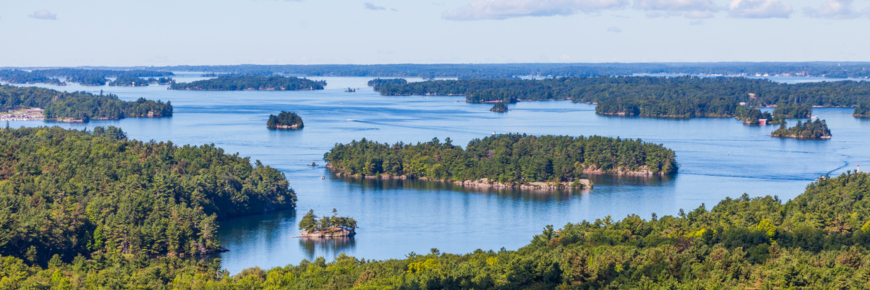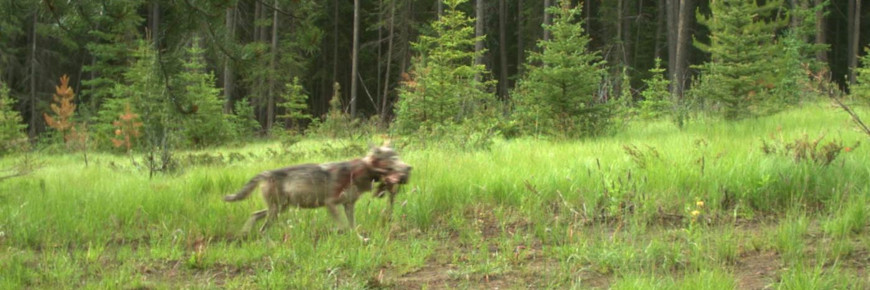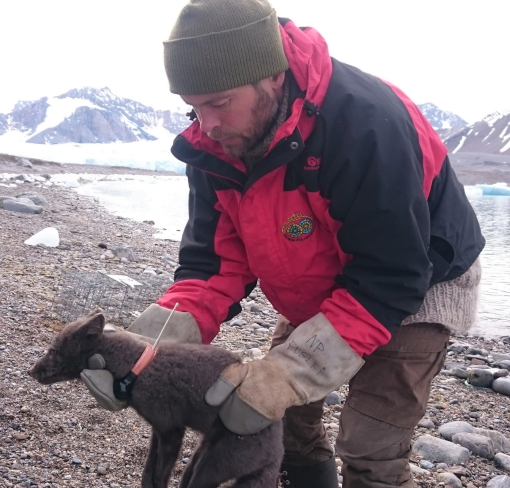
Wildlife overpass, Banff National Park: a lifeline for wild travellers.
The wanderers: epic and perilous journeys of animal travellers
Connecting protected areas lets wildlife move between them, allowing populations to mix and strengthening biodiversity.
“Sal, we gotta go and never stop going till we get there."
“Where we going, man?”
"I don't know but we gotta go.”
Like Jack Kerouac and his friends, animals need to roam. Some will travel hundreds and sometimes thousands of kilometres looking for food, mates, and new territory. Others may travel much shorter distances but must navigate around roads, cities and other urban hazards.
That’s why creating corridors—travel routes connecting favourable habitats—is so important to Parks Canada and its partners.
Corridors are patchwork quilts, made of pieces. Those pieces might be protected natural spaces such as parks and preserves, or margins of land along farmer’s fields, or highway overpasses and underpasses. They can be rivers, marshes and lakes—because fish and aquatic animals are travellers, too. Birds need places to alight during their migration journeys.
If we could walk (or fly, or swim) alongside some of these animal travellers, we’d get the wild version of On the Road… and discover the vital need for connected landscapes.
“Swam the St. Lawrence River today. Now I just have to cross that darn four-lane highway.” If Alice the moose had kept a travel journal, it would have been every bit as compelling as Jack Kerouac’s. Alice was a cow moose that was radio-collared and released in 1998 into New York State’s Huntington Wildlife Forest. Two years afterwards, Alice decided she needed a change of scene. She headed north to the U.S.–Canada border, swimming across the St. Lawrence at Thousand Islands National Park. Situated in one of Canada’s most biodiverse regions, the park is a key regional partner in protecting the Frontenac Arch Biosphere Reserve. Alice then walked across one of Canada’s busiest highways, the 401. By winter, after travelling roughly 570 kilometers, she had settled in Ontario’s Algonquin Provincial Park. In 2001, her remains were found in the eastern part of Algonquin. The cause of death was unknown. Alice is the “animal inspiration” for the Algonquin to Adirondacks (A2A) Collaborative, which seeks to create a linked series of ecosystems stretching from New York’s Adirondacks region to Ontario’s Algonquin Provincial Park. As free as the rain that inspired her name, Pluie was a five-year-old grey wolf who was captured and radio-collared in southern Alberta in 1991. Over the next two years, she travelled back and forth across an international border, covering an area of 100 000 square kilometres. That’s 10 times the size of Yellowstone National Park and 15 times the size of Banff National Park. Pluie’s wanderings came to an end in December 1995, when she was shot in a legal hunt near Kootenay National Park in B.C. The Yellowstone to Yukon (Y2Y) Conservation Initiative works to connect habitat from Yellowstone to Yukon and protect far-ranging wildlife like Pluie the wolf. Parks Canada partners with Y2Y on different initiatives including wildlife crossings in Kootenay National Park. These crossings help reduce animal-vehicle collisions on Highway 93 in the park. This is a map of central U.S. and Canada showing the route of Pluie the wolf. The route is shown by a red line with arrows to indicate the wolf’s direction. The line begins at a point south of Banff National Park in Alberta. It descends to cross the U.S. border and then loops west through Montana, Idaho and Washington. Finally, it heads northeast, crossing into Canada again and ending up at a point south of Kootenay National Park in B.C.
With their beards, white coats and dagger-like horns, mountain goats are easily recognized but not easily seen. In 2017, Parks Canada staff radio-collared about 20 mountain goats in Yoho and Banff national parks to study their movements and habitat use. Mountain goats are herd animals, but one male decided to strike off on his own. In the summer of 2018, he took a week to travel eastward from the Slate Range near the hamlet of Lake Louise in Banff National Park to Mount Cory just outside the town of Banff—a distance of about 50 kilometres. This doesn’t sound like much compared to Alice the moose or Pluie the wolf. But it’s impressive for a mountain goat, a species that must stick to the high country. (None of the other goats covered more than 20 kilometers). And it’s important information for park managers who need to know the potential ranges of mountain goats in a region that includes a ski resort and the Trans-Canada Highway. Putting food on the table is part of any caregiver’s duties. But walking 20 kilometers through challenging terrain with the food in your mouth? That’s dedication! In mid-2019, this wolf made a kill somewhere east of the town of Banff in Banff National Park. The animal then had to travel west back to its den in the Hillsdale area through Alberta’s Bow Valley, an area of very high human use. Luckily, Parks Canada maintains and protects several wildlife corridors in this locale. In addition, the agency regularly closes the Hillsdale area during wolf-denning season. Still, this wolf had to keep on the safe side of campgrounds, roads, the railway, an airstrip, the Banff town site… and curious humans. The wolf was photographed twice by remote camera, carrying its prey in its mouth. The prey is hard to identify, but regardless, it would have been a welcome sight to the hungry wolf pups! The arctic explorer Sir John Franklin would have saluted this young female arctic fox. Far horizons drew her like a magnet, just as they drew Franklin. Fitted with a satellite tracking device in Spitsbergen, Norway, in March 2018, this fox walked across sea ice to Greenland and eventually to Canada’s Ellesmere Island. She covered 3,506 kilometres in 76 days—one of the longest-ever recorded journeys by a fox. Her whereabouts are now unknown; her satellite transmitter stopped working in February 2019. As with Franklin, sea ice played a big role in her journey—but as a bridge, not an obstacle. While conservationists are working hard to link ecosystems in populated southern areas, nature does that job in the North with sea ice. But the melting of sea ice may threaten some parts of this bridge, which allows populations of arctic animals to intermix. 1. Alice the moose

2. Pluie the wolf
.jpg)
Pluie's recorded wanderings: long text description
3. The "Slate Ranger" mountain goat

4. The denning wolf of the Bow Valley

5. The "world citizen" arctic fox

- Date modified :